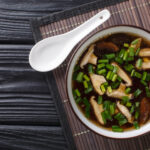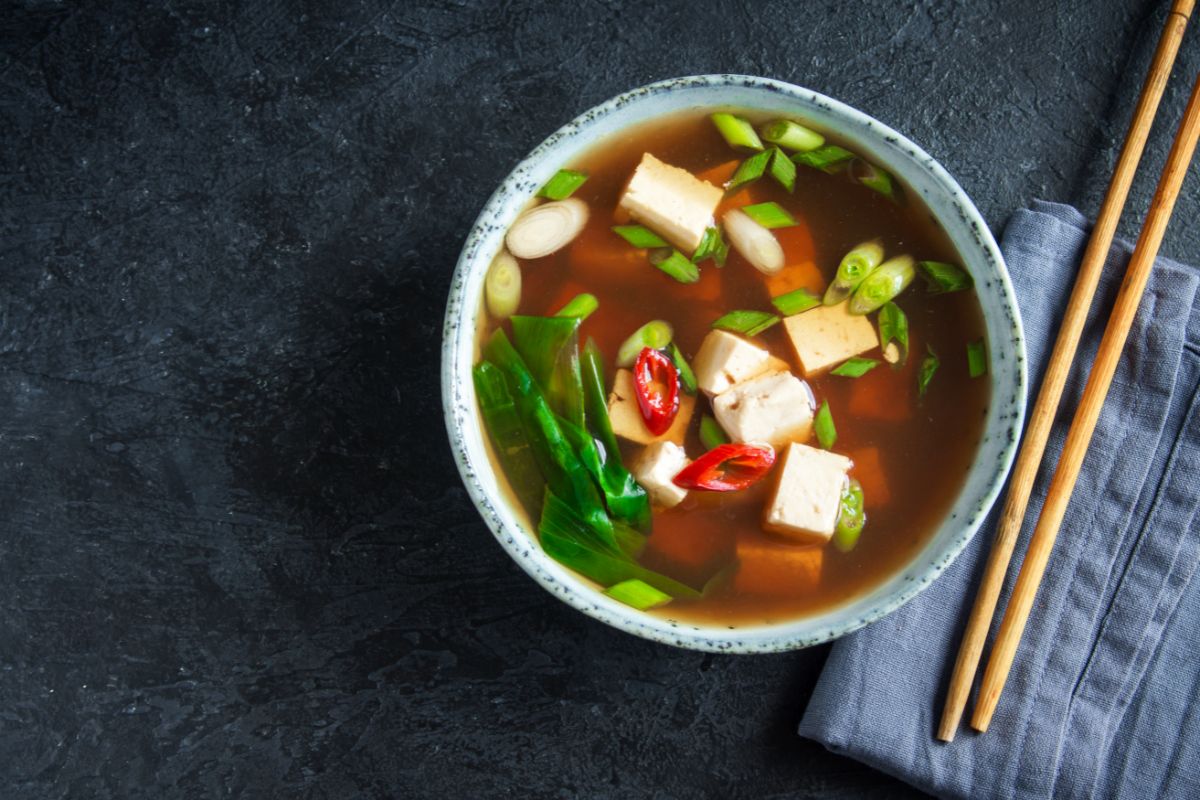Sake is a traditional Japanese rice wine that has been enjoyed for centuries. Whether you are a sake enthusiast or a novice, knowing the basic sake etiquette is essential to fully enjoy and appreciate this beverage.
With that being said, let’s take a look at essential sake etiquette that you should know before your trip to Japan so that you can fully immerse yourself in the culture and tradition of sake.
What is sake?
Sake is a traditional Japanese alcoholic beverage made from fermented rice. It is often referred to as “rice wine,” although it is brewed more similarly to beer than wine.
Sake has a long history in Japan and is an important part of Japanese culture, frequently consumed during social gatherings and special occasions.
It comes in a range of flavors and can be served hot or cold. Sake is also a popular souvenir for visitors to Japan.
Basic sake etiquette you need to learn before your trip
Here are some basic sake etiquettes we recommend following while in Japan:
Pour for others first
One of the basic sake etiquettes to follow is to pour sake for others before pouring for yourself. This shows respect and consideration for others and is a common practice in Japanese culture.
When pouring, hold the bottle with two hands and pour with your right hand. Pour until the cup is about 70-80% full, and then stop. It’s also polite to offer to refill someone’s cup before they finish it, as a sign of generosity and hospitality.
Hold the cup with both hands
One common etiquette when drinking sake is to hold the cup with both hands when receiving it from someone else. This shows respect to the person offering you the sake and is a traditional custom in Japan.
Additionally, it is customary to wait for everyone to be served before taking a sip, as drinking before others are served is considered impolite. It’s also important to not pour your own sake and instead wait for others to pour for you.
Don’t pour your own sake
It is considered good manners in Japan to pour sake for others, rather than oneself. This is because it shows respect and consideration for others, and also allows for the opportunity to engage in conversation and build relationships over the shared experience of drinking sake.
If you would like more sake, it is appropriate to pour for someone else first and wait for them to reciprocate by pouring for you. If no one is available to pour for you, you can politely ask someone to pour for you.
Refill others’ cups
Another important etiquette to remember when drinking sake is to refill the cups of those around you. This is a way of showing hospitality and care for your fellow drinkers. It is polite to refill other people’s cups before your own.
If someone offers to refill your cup, it is also considered polite to offer to refill theirs in return.
However, if someone does not want their cup refilled, it is important to respect their wishes and not insist on filling it.
Don’t drink until everyone is served
It is considered rude to drink before everyone has been served. Wait until everyone has their cup filled, and then say “Kampai” (cheers) before taking a sip.
It’s also important to pace yourself and not drink too quickly, as it may be seen as impolite.
Additionally, it’s polite to thank your host or the person who poured your sake by saying “Arigato gozaimasu” after drinking.
Don’t mix sake with other drinks
Another sake etiquette is to not mix sake with other drinks. Sake is traditionally enjoyed on its own, and mixing it with other drinks can be considered disrespectful to the beverage and its cultural significance. Additionally, mixing sake with other drinks can alter its taste and aroma, detracting from the unique qualities of the sake itself.
Say “Kanpai” before drinking
Saying “Kanpai” (乾杯) before taking a sip is a common custom in Japan. It is similar to saying “cheers” in English and is a way to show appreciation and respect to the people you are drinking with. It’s important to make eye contact and wait for everyone to have their drink before taking a sip.
Drink in moderation
While it is perfectly acceptable to enjoy sake during a meal or social gathering, it is important to be mindful of how much you are consuming and to pace yourself accordingly.
It is also considered impolite to become visibly intoxicated or to overindulge in alcohol.
Additionally, it is customary to drink water or tea alongside sake to help balance and hydrate the body
Don’t get drunk
Finally, in Japanese culture, getting drunk is generally frowned upon, especially in formal settings. It’s important to pace yourself and know your limits.
If you’re unsure about how much you can handle, it’s best to err on the side of caution and take it slow.
Remember, the goal is to enjoy the experience and appreciate the flavor and aroma of the sake, not to get drunk.
Are there different types of sake?
Yes, there are several different types of sake, each with its own unique flavor profile and characteristics. Some of the most common types of sake include:
- Junmai – This is a pure rice sake that is made only from rice, water, and koji, without any added alcohol or sugar. It has a rich, full-bodied flavor and is often served warm.
- Honjozo – This type of sake is made with added alcohol, which gives it a lighter, more fragrant flavor. It is often served chilled.
- Ginjo – Ginjo sake is made with highly polished rice and has a light, fruity aroma, and a delicate, complex flavor. It is often served chilled.
- Daiginjo – This is a premium sake made with the highest quality rice that has been polished to at least 50% of its original size. It has a refined, elegant flavor and is often served chilled.
- Nigori – This is an unfiltered sake that has a cloudy appearance and a sweet, creamy flavor. It is often served chilled and is a popular choice for dessert.
- Taru – This sake is aged in cedar barrels, which gives it a distinct woody flavor and aroma. It is often served chilled and pairs well with grilled or smoked foods.
How to know which sake to order
When ordering sake, there are a few things you can consider to help you choose the right type for you:
Ask for recommendations
Don’t be afraid to ask the waiter or sake sommelier for recommendations based on your taste preferences.
Consider the classification
Sake is often classified by its production method, such as Junmai, Honjozo, Ginjo, and Daiginjo. These classifications can give you an idea of the level of refinement and flavor intensity of the sake.
Look at the region
Different regions in Japan produce different styles of sake, so you can choose based on the regional characteristics.
Read the label
The label can provide information on the flavor profile, rice type, and production method, which can help you make an informed decision.
Consider the occasion
Different types of sake may be more appropriate for certain occasions or dishes, such as dry sake for sushi or sweeter sake for dessert.
Remember, everyone’s taste preferences are different, so don’t be afraid to try different types of sake to find your favorite.
Mistakes to avoid when drinking sake
Drinking sake like it’s a shot
Sake is meant to be sipped, not gulped down like a shot. Take your time and enjoy the flavors and aromas.
Using the wrong temperature
Different types of sake are best served at different temperatures. Don’t assume that all sake should be served hot or cold. Check with your server or do some research beforehand to know the ideal temperature for the sake you’re ordering.
Drinking sake in the wrong order
If you’re having multiple types of sake, make sure to drink them in the right order. Start with lighter, milder sakes and work your way up to richer, more full-bodied ones.
Drinking too much too fast
Sake can be deceptively strong, so it’s important to pace yourself and drink in moderation. Don’t drink too much too fast, or you’ll risk getting drunk quickly.
Disrespecting the sake
Sake is considered a sacred drink in Japan, so it’s important to treat it with respect. Don’t talk loudly or disrespectfully around it, and don’t pour it carelessly.
Drinking sake with the wrong food
Sake pairs well with a variety of foods, but not all foods go well with sake. Avoid pairing sake with spicy or strongly flavored foods, as they can overpower the delicate flavors of the sake.
Understanding basic sake etiquette
Understanding basic sake etiquette is crucial for any traveler visiting Japan.
It is essential to remember to pour for others first, hold the cup with both hands, not pour your own sake, refill others’ cups, not mix sake with other drinks, say “Kanpai” before drinking, and drink in moderation. It is also helpful to understand the different types of sake and how to order them in a Japanese restaurant.
By following these simple rules, travelers can enjoy the traditional and cultural experience of drinking sake in Japan while showing respect for Japanese customs and traditions.
- 16 Best Websites To Watch Japanese Movies With English Subtitles - May 11, 2023
- Is ZIPAIR The Best Airline For Traveling To Japan? - May 11, 2023
- Ryu Murakami Vs Haruki Murakami – Which One Should You Read? - May 11, 2023








